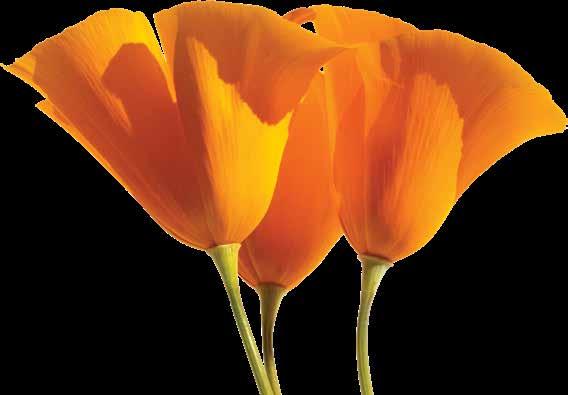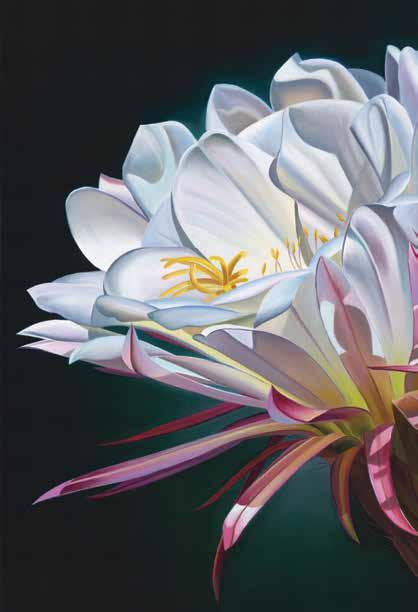Wallace Desert Garden A unique and vibrant photograph of one of the roses from the Desert Wallace Rose Garden located in the Arboretum’s Demonstration Garden. This image was captured by Jeremy Dufault Photography. Visit his Facebook to see more of his photography. www.facebook.com/ jeremydufaultphotography.
Wallace Desert
Rose Garden Text and Photos by Gaylyn Yanke
A
Although H.B. Wallace had an avid interest in desert plants, Mrs. Jocelyn Wallace was the rose aficionado. She began collecting in 1987, long before many rose cultivars were readily available. Of the 120 plants in the Wallace Desert Garden, twelve were left in Scottsdale. Out of those, only three cultivars are not now represented in the Demonstration Garden at Boyce Thompson Arboretum.
Most of the Wallace roses are hybrid tea roses, but we also have floribunda, grandiflora, miniature, rock roses, and climbers. “Tea” roses originated in China centuries ago. The name is derived from the fact that the fragrance of the flowers is reminiscent of the smell of brewing tea. The original tea roses were larger shrubs with big flowers that had weak “necks” so the flowers were always nodding down.
In the middle of February 2017, Boyce Thompson horticulturists and Native Resources staff dug up the Wallace roses, transported them to Boyce Thompson, and put them in the ground—all in one day. With mature plants such as these were, it is important to get the plants back in the ground the same day. Of our 118 rose bushes, there are 46 named cultivars and 26 unnamed Rosa species. Since they were planted, we have lost only three plants.
In 1867, Guillot of France introduced what would be the first hybrid tea rose. When most gardeners think of roses today, they are thinking of these hybrids, with their classic, long stems and perfect individual blooms that make for good cut flowers. They are hardy in Zones 4-9 and bloom repeatedly throughout the season. They usually grow to 4 to 5 feet tall and like all roses, prefer full sun. My favorite here is Rosa John F. Kennedy, introduced in 1964, with gorgeous white double blooms carrying a delicious, fruity-licorice aroma. Last fall’s bloom resulted
btarboretum.org | Boyce Thompson Arboretum | 17





